16 Stunning Low-Maintenance Trees Perfect for Any Garden
Trees can bring calm and beauty to any garden. Some types do not need much attention, which makes them perfect for busy homeowners. These trees can grow well in different climates and soil types. You can enjoy their shade, color, or blooms without too much effort. This guide will help you pick trees that are both attractive and easy to care for.
This post may contain affiliate links, which helps keep this content free. Please read our disclosure for more info.
Eastern Redbud
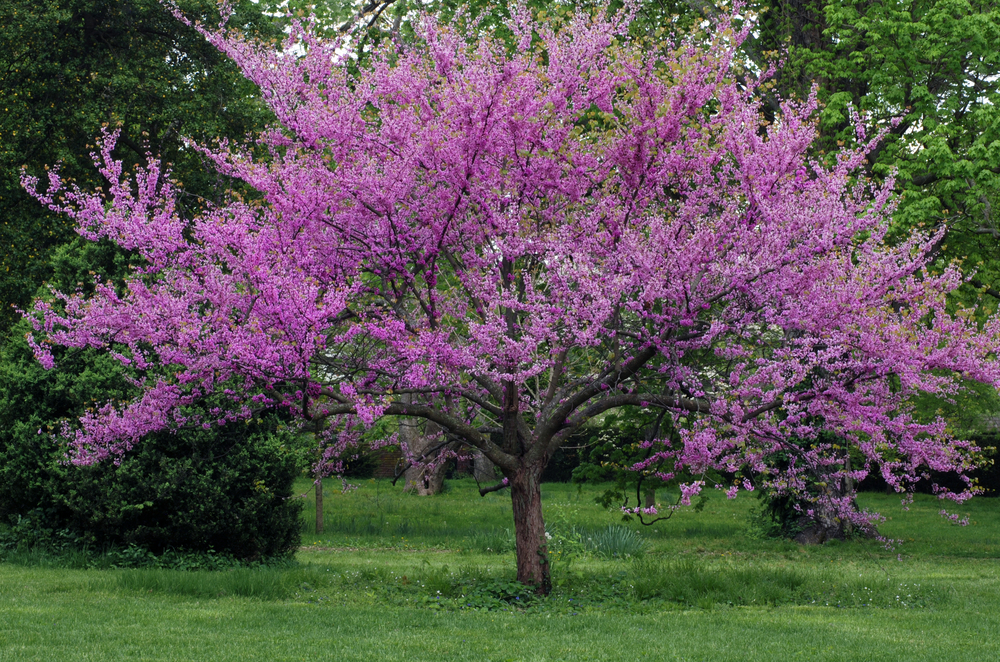
The Eastern Redbud grows best in full sun to partial shade and needs very little attention once established. It thrives in well-drained soil and can tolerate short periods of drought. Watering once a week during the first few months helps it develop strong roots. Pruning is only needed to remove dead branches or maintain shape.
This tree typically reaches around 20 to 30 feet tall and takes about 12 to 18 months to show steady growth. Its pink blossoms in early spring add charm without requiring extra care. It suits smaller gardens because of its manageable size and neat branching. Once rooted, it holds up well through seasonal changes with minimal effort.
Japanese Maple

Japanese Maples are ideal for shaded gardens and need very little pruning. They prefer moist, well-drained soil and benefit from a light mulch layer to keep roots cool. Watering is only important during long dry spells. These trees do not need much feeding or trimming.
They reach 10 to 25 feet in height and take about 24 months to fill out their canopy. Their slow growth and strong structure make them easy to manage. The leaves turn rich shades of red and orange in fall without any extra work. Many gardeners choose this tree for its color and low upkeep.
Crape Myrtle
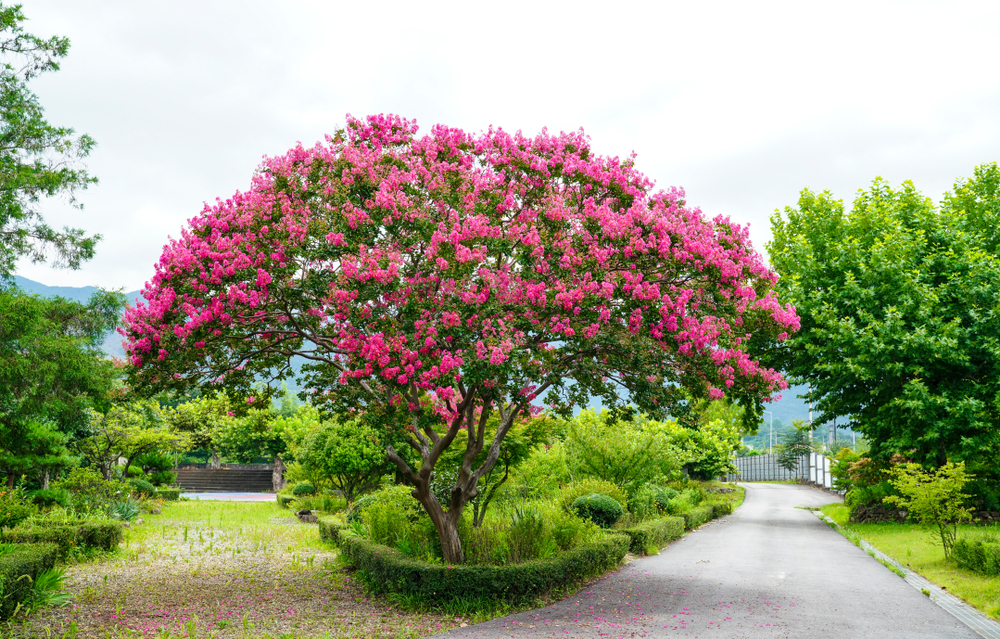
Crape Myrtles enjoy sunny spots and bloom through summer with little fuss. They thrive in average soil and tolerate heat well. Regular watering during the first growing season helps them settle, but they need little care after that. Light pruning in late winter can shape the tree.
They grow 15 to 25 feet tall and take about 18 to 24 months to become well established. Their bark, flowers, and foliage give visual interest throughout the year. These trees handle dry conditions and urban environments well. Their reliable nature makes them a solid choice for low-maintenance gardening.
Serviceberry

Serviceberries do well in a variety of soils and prefer full sun or partial shade. They need watering in the early months but grow steadily on their own after that. The tree benefits from occasional mulch and minimal pruning. It can handle cooler temperatures without issue.
They reach heights between 15 and 25 feet and begin showing mature growth in about 18 months. Spring brings white blossoms, while summer produces small, edible berries. In fall, the leaves turn orange or red without the need for special care. Their seasonal changes happen naturally and require no added effort.
American Hornbeam
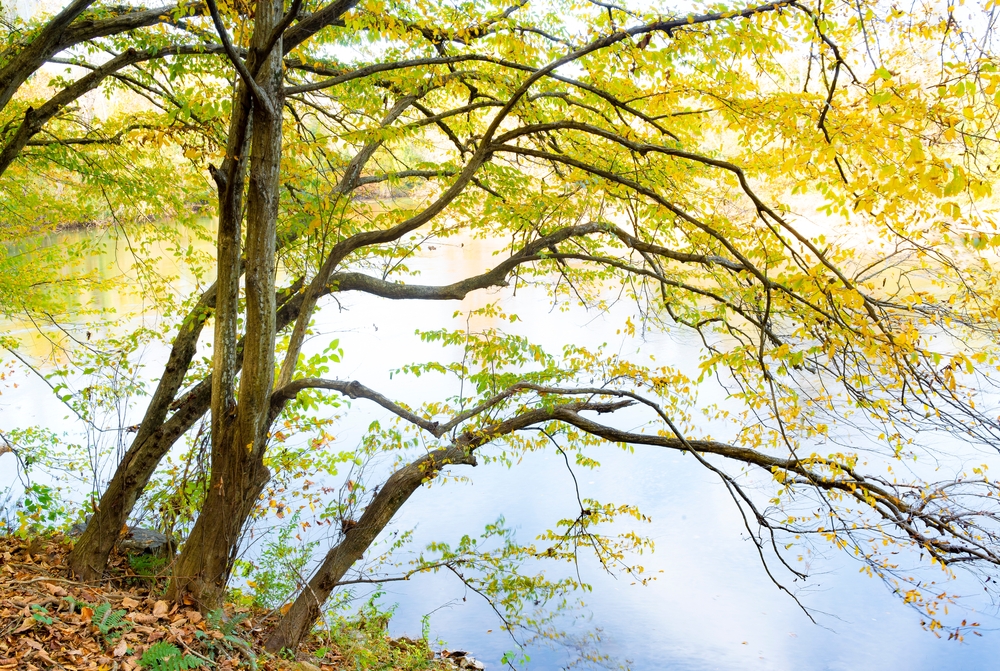
The American Hornbeam grows well in shaded areas and adapts to different soil types. It needs light watering in the first season but becomes drought-tolerant once established. Its dense wood and slow growth reduce the need for pruning. This tree is a solid, low-hassle addition to any garden.
It grows to about 20 to 35 feet in height and takes 24 months or more to develop a full shape. The leaves turn yellow to orange in fall and drop cleanly. It holds its form well without constant trimming. Homeowners value it for both its structure and ease of care.
Flowering Dogwood
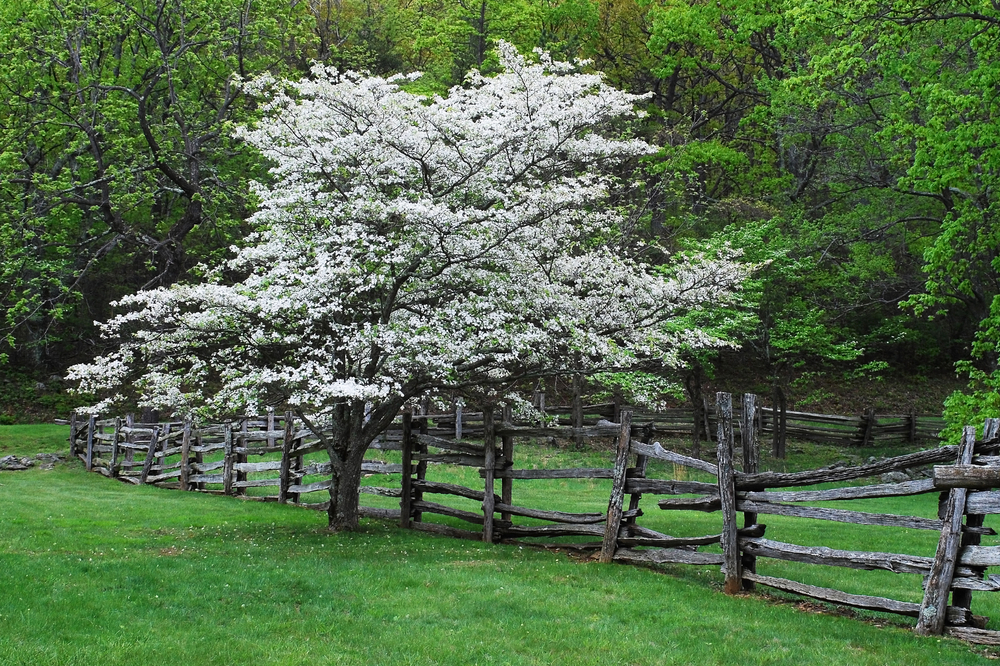
Flowering Dogwoods prefer filtered sunlight or partial shade and grow well in moist, well-drained soil. Once planted, they need moderate watering until roots are strong. After the first year, they require little maintenance beyond seasonal mulching. Occasional pruning may help keep the tree neat.
These trees usually reach 15 to 25 feet tall and take around 18 months to settle in. They bloom with soft pink or white flowers in spring and display red leaves in fall. Their growth is slow and steady, which makes them easy to manage. The size works well in both large and small gardens.
River Birch

River Birch trees grow quickly and are easy to care for, especially in moist soil. They do well near water sources but can handle dry spots once established. Young trees benefit from weekly watering and a layer of mulch. Minimal pruning is needed unless shaping is desired.
This tree grows 30 to 40 feet tall and starts showing rapid growth in about 12 months. Its bark peels naturally, adding texture without requiring any trimming. The leaves turn golden yellow in fall and drop cleanly. River Birch trees suit gardeners looking for fast, low-effort shade.
Sweetbay Magnolia
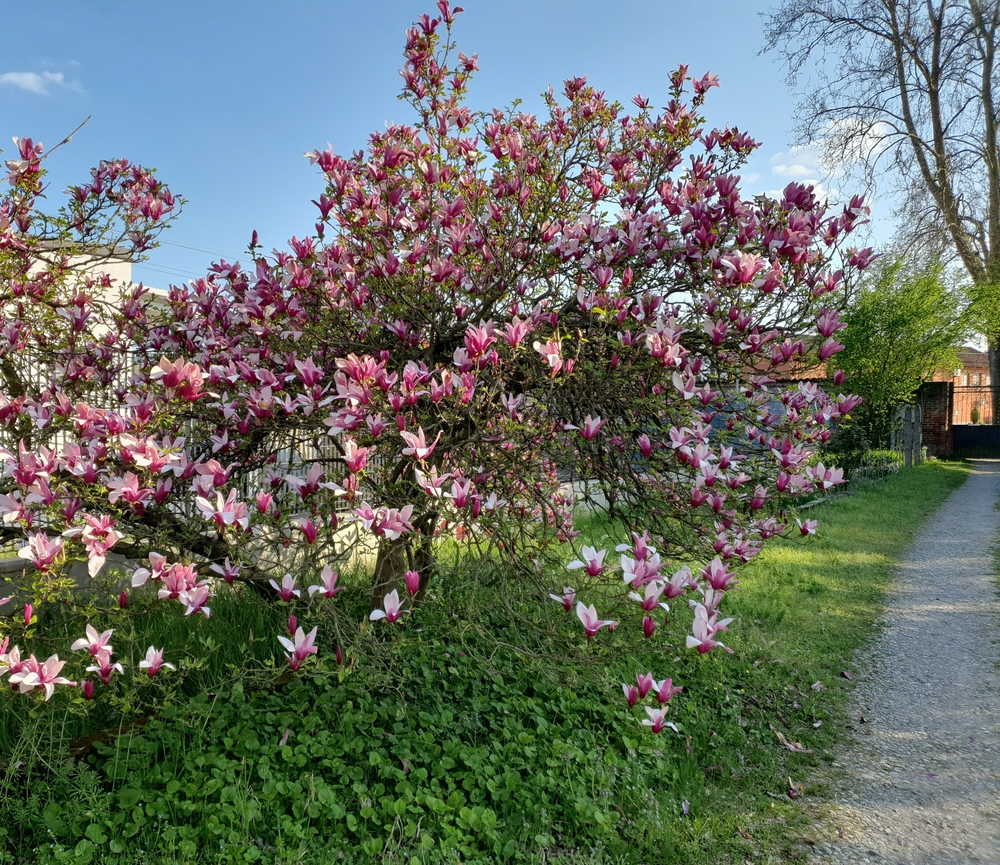
Sweetbay Magnolia thrives in full sun or partial shade and grows best in slightly acidic soil. It needs watering during dry spells in the first year. Once settled, it requires very little attention. Light pruning after flowering is all it usually needs.
This tree grows to about 15 to 20 feet and takes around 18 months to start filling out. It blooms with creamy white flowers that carry a lemon scent. The glossy leaves stay green longer than many other trees. It is a simple choice for those who want seasonal interest without much work.
Chaste Tree

The Chaste Tree thrives in full sun and prefers dry to average soil. It is drought-tolerant once established and needs minimal watering. This tree benefits from occasional pruning to encourage more blooms. It is not picky about soil conditions and handles heat well.
It grows 10 to 20 feet tall and begins to bloom within the first year. The purple flower spikes attract butterflies and bloom from summer into fall. The leaves are aromatic and resist pests naturally. Its compact size and low upkeep make it ideal for small yards.
Amur Maple

Amur Maple grows well in full sun or partial shade and is not demanding about soil type. It benefits from light watering during dry spells, especially in its first year. This tree does not need frequent pruning and stays manageable in height. It handles urban conditions and cold climates well.
It usually grows 15 to 20 feet tall and takes around 12 to 15 months to settle. The tree has bright red leaves in fall, which stay vivid without extra care. It holds its shape naturally and does not drop heavy debris. Amur Maple works well in smaller gardens or along walkways.
Golden Rain Tree

Golden Rain Tree needs full sun and grows in many soil types, including sandy or rocky areas. It requires little water after the first year and does not need regular pruning. This tree tolerates heat and urban air without complaint. Its rounded shape makes it easy to place in gardens.
It grows about 25 to 35 feet and flowers within 18 months. The yellow blooms appear in summer, followed by lantern-shaped seed pods. The tree adds visual interest with minimal effort. Goldenraintree is a great option for gardeners who want color without constant upkeep.
Black Tupelo
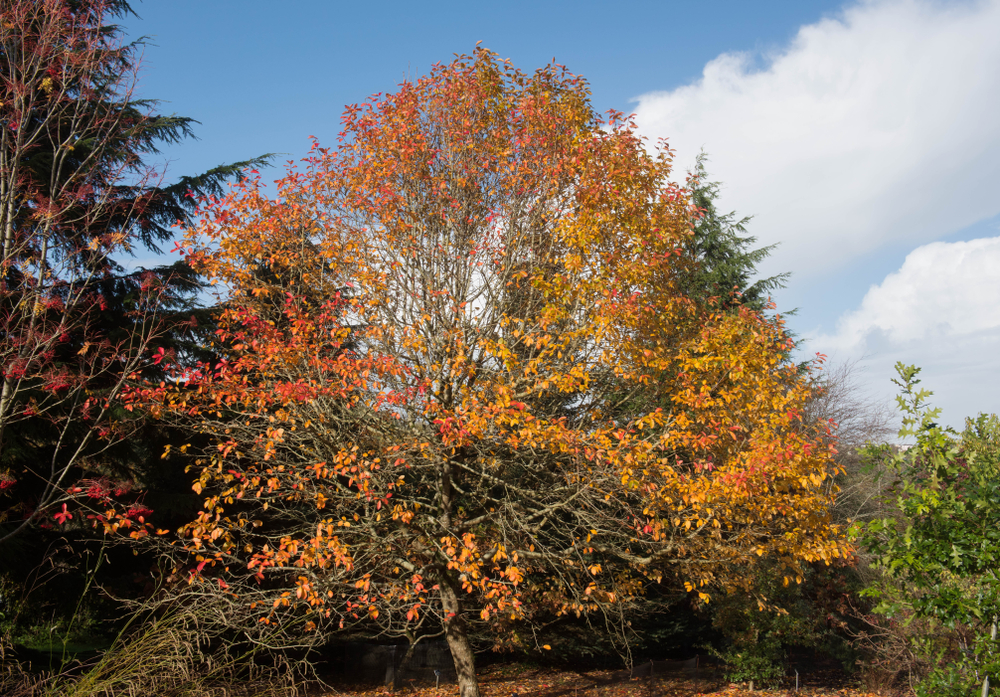
Black Tupelo does best in moist, slightly acidic soil and full sun. It needs regular watering in its first year, then adjusts well on its own. The tree has strong limbs and does not need frequent trimming. It is known for its tolerance to wet soil and long life span.
It grows about 30 to 50 feet and starts establishing in the first 18 months. The fall leaves turn orange, red, and yellow with no added treatment. Its shape stays neat as it grows. Black Tupelo works well in natural or woodland-style gardens.
Fringe Tree
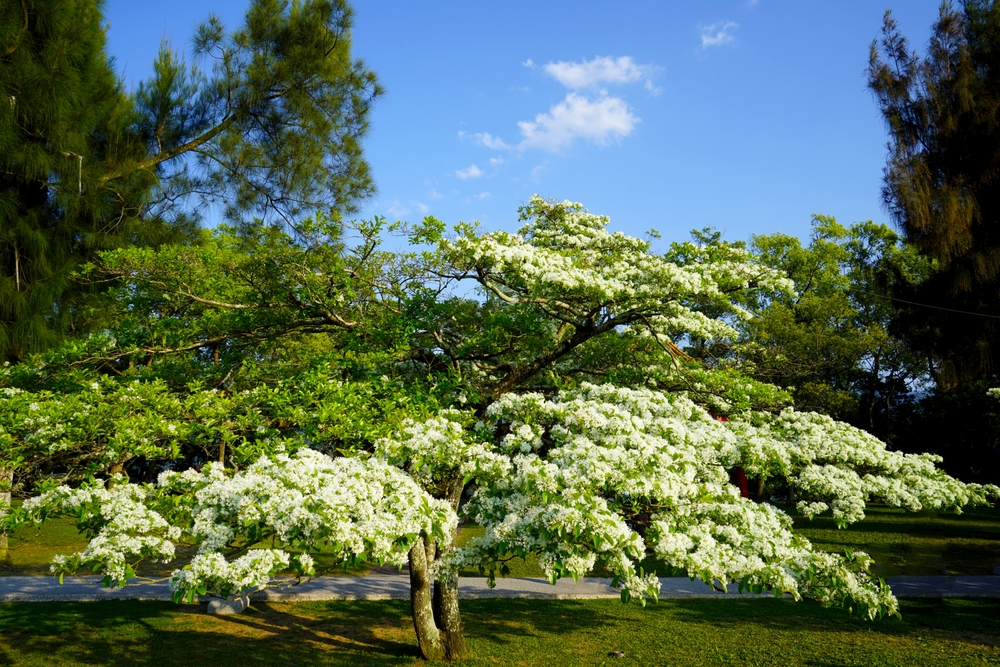
Fringe Tree prefers full sun or partial shade and grows in a variety of soil types. It needs regular watering during the first year, then adapts well. Pruning is rarely needed as the tree grows in a natural, rounded shape. It resists common pests and diseases.
This tree grows 12 to 20 feet and starts blooming in its second year. The white fringe-like flowers appear in late spring and have a light scent. It grows slowly, making it easy to manage in tight spaces. Fringe Tree adds soft texture without extra work.
Japanese Snowbell
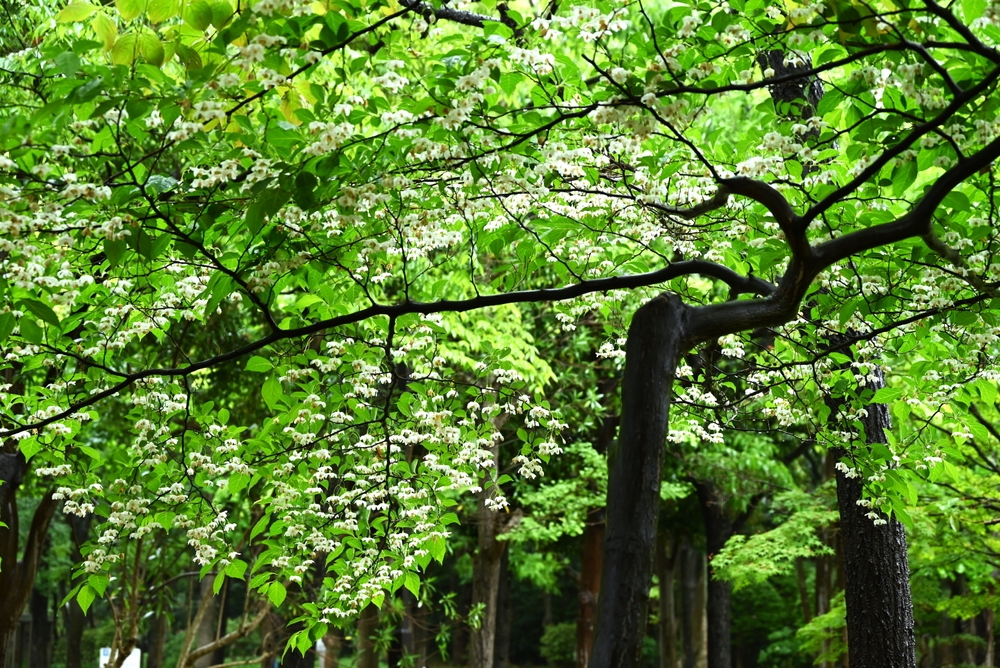
Japanese Snowbell prefers partial shade and rich, slightly acidic soil. It requires moderate watering, especially during dry weather. The tree grows in a graceful shape that needs little pruning. It is best suited for sheltered spots in mild climates.
It reaches 20 to 30 feet tall and starts showing strong growth in its second year. White bell-shaped flowers bloom in early summer and hang under the branches. The tree adds a soft, airy look to gardens. It grows slowly, making it easy to care for.
Paperbark Maple

Paperbark Maple likes full sun to part shade and prefers moist, well-drained soil. Watering is helpful during dry spells, especially early on. The bark peels naturally, needing no upkeep. Light pruning is enough to manage size.
It grows 20 to 30 feet and starts filling out in about 18 months. The cinnamon-colored bark stands out all year. Leaves turn red or orange in fall. It is a steady tree with little mess or work.
Magnolia ‘Jane’
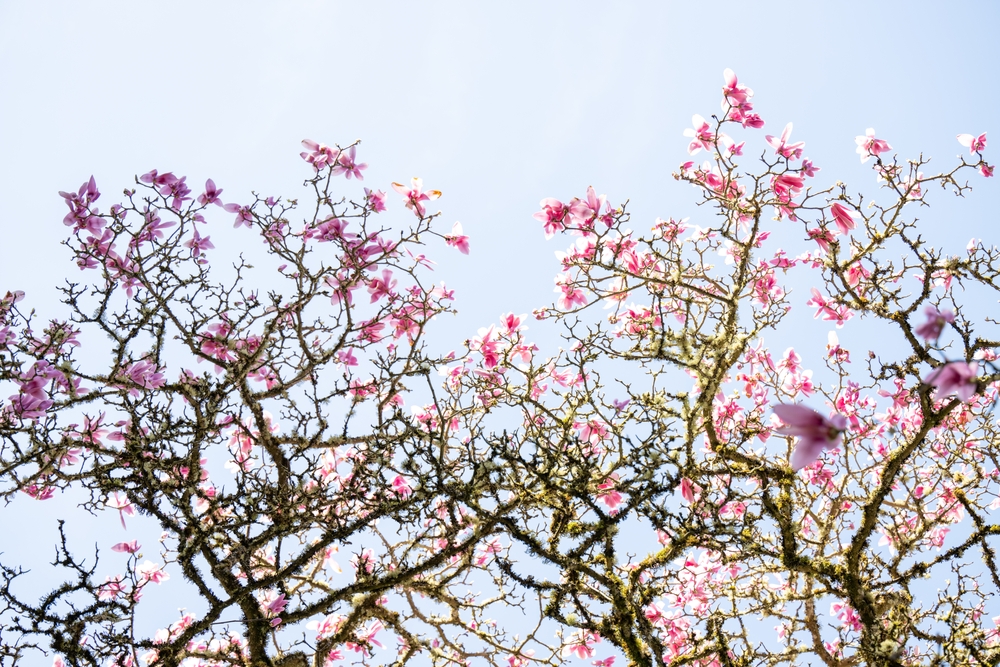
Magnolia ‘Jane’ does well in full sun or partial shade and tolerates a range of soils. Watering is important during the first growing season, then it adjusts easily. It grows slowly and holds a tidy shape with little pruning. It resists many pests and common issues.
This tree reaches 10 to 15 feet tall and begins blooming in its second spring. The large, pink-purple flowers appear before leaves emerge. It is ideal for small gardens or near patios. Magnolia ‘Jane’ brings color with little effort.
Trees that require little upkeep are a smart addition to any garden plan. They give beauty, support local wildlife, and do not need much attention. Many options grow well in tight spaces and different soil types. A low-maintenance tree can bring balance and charm to your yard with little effort.
This article originally appeared on Avocadu.
